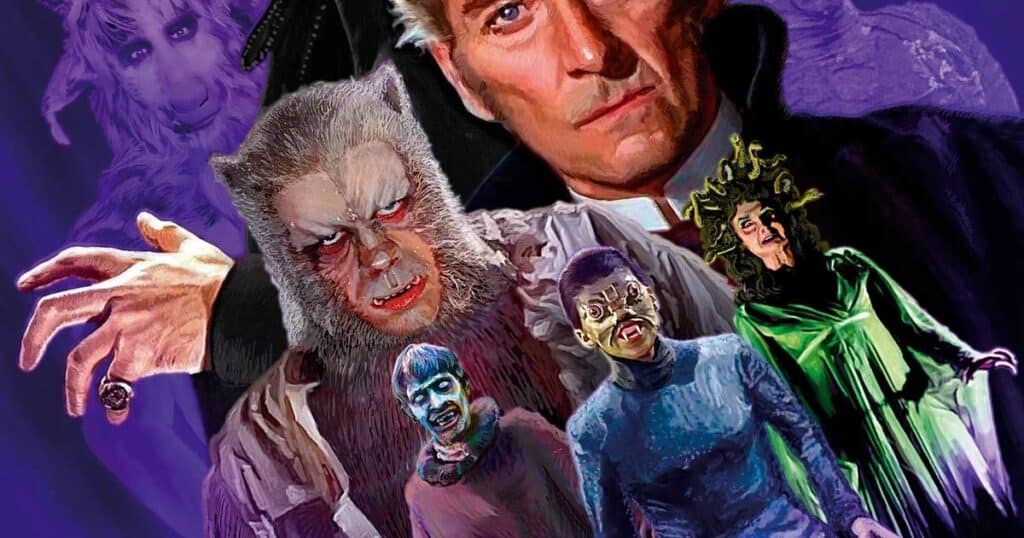

Hammer Films was founded in 1934, but it took an eleven year hiatus on the way to the ‘50s, the decade when the company entered the era it’s best known for. In 1955, the sci-fi horror film The Quatermass Xperiment became their first major international success, inspiring Hammer to start building toward becoming one of the most popular genre companies of all time. Since this year marks the 90th anniversary of Hammer Films, we decided it was time to put together a list of some of The Best Hammer Horror Movies. Here we go:
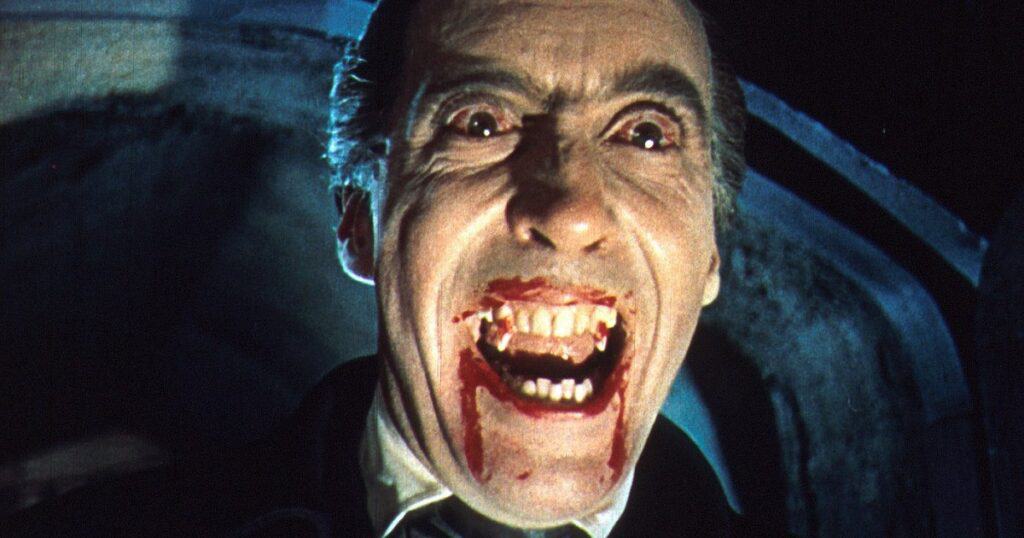
HORROR OF DRACULA (1958)
Sure, this is yet another adaptation of Bram Stoker’s novel Dracula; a re-telling of the story that any horror watcher will see roughly fifty versions of over the course of their fandom. But director Terence Fisher and screenwriter Jimmy Sangster brought some twists to this one that are not present in others and shuffled some of the characters. As usual, it begins with a young man named Jonathan Harker coming to Count Dracula’s castle on business – but then we get the twist that Harker is actually a vampire hunter, in league with professional vampire killer Doctor Van Helsing. He knows what Count Dracula is and has come to destroy him. Of course, that doesn’t work very well for him, and Van Helsing has to spend the rest of the movie trying to stop Dracula, who has his evil sights set on Harker’s fiancée. Horror of Dracula is a thrilling reimagining of Stoker’s story that moves along at a surprisingly fast pace, telling its story in a brisk 81 minutes. Since it’s so great, it’s no shock that it spawned a franchise. Movie-goers couldn’t get enough of Christopher Lee’s performance as Dracula, and he came back for six sequels (Dracula: Prince of Darkness, Dracula Has Risen from the Grave, Taste the Blood of Dracula, Scars of Dracula, Dracula A.D. 1972, and The Satanic Rites of Dracula). Peter Cushing, the coolest Van Helsing ever, came back to share the screen with Lee in a couple of those sequels, and also returned for two adventures without Lee (The Brides of Dracula and The Legend of the 7 Golden Vampires, a martial arts / horror mash-up that saw Hammer collaborating with Shaw Brothers Studios) – which are actually more entertaining than some of the Lee Dracula sequels.
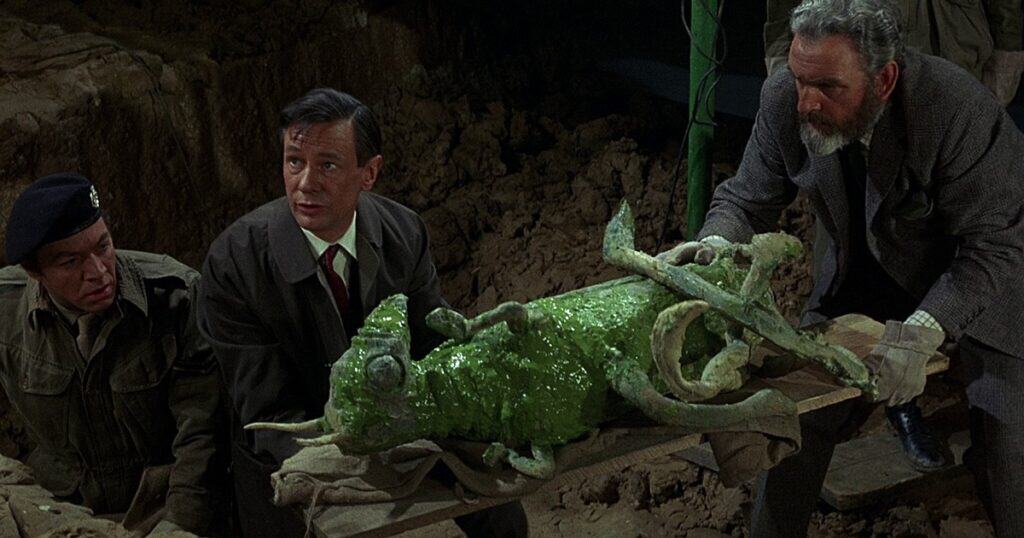
QUATERMASS AND THE PIT (1967)
Hammer’s Quatermass trilogy is the rare franchise that gets better with each installment. The first film, The Quatermass Xperiment (a.k.a. The Creeping Unknown) is a fine story about an astronaut who’s a bit different when he returns from a trip into space. Turns out, he has been taken over by an alien entity and is mutating. Quatermass 2 (a.k.a. Enemy from Space) has more going on, dealing with a village that has fallen under the control of aliens, and has elements reminiscent of Halloween III: Season of the Witch – which makes sense since these stories originate from the same person, Nigel Kneale. Directed by Roy Ward Baker and scripted by Kneale, Quatermass and the Pit begins when workers extending the London Underground unearth a strange skull and a mysterious metal. Investigating the situation, the character at the center of this series, Professor Bernard Quatermass (played in this film by Andrew Keir and in the previous films by Brian Donlevy) finds himself dealing with Martians that resemble the Devil, may be responsible for rumors of a haunting in the area, and have deadly telekinetic abilities. You can see reflections of Quatermass and the Pit in some of John Carpenter’s work, especially Prince of Darkness.
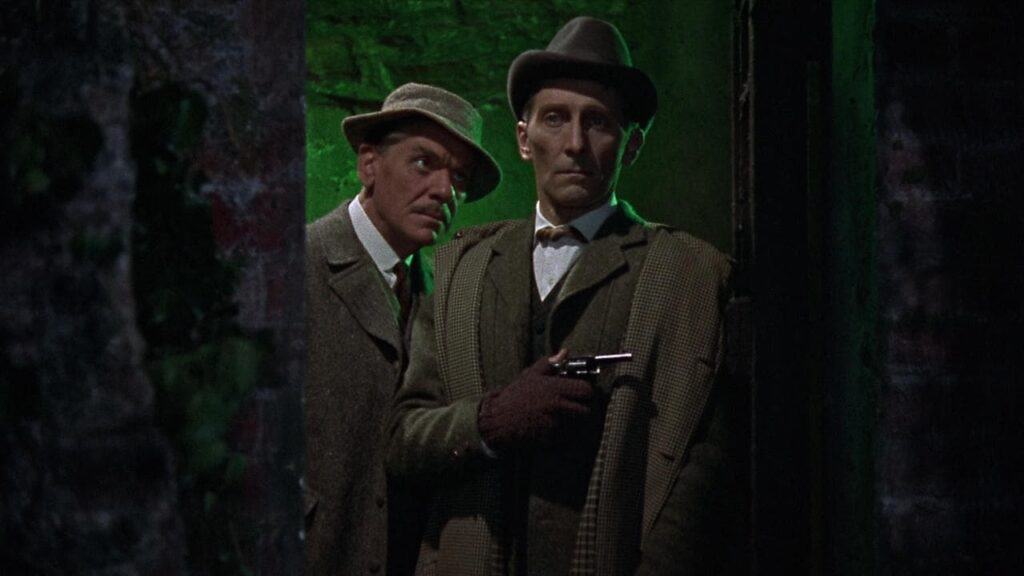
THE HOUND OF THE BASKERVILLES (1959)
Sir Arthur Conan Doyle wrote about the detective character Sherlock Holmes and his friend / biographer Dr. John H. Watson in four novels and fifty-six short stories – but as a horror fan, the one I have always been drawn to is The Hound of the Baskervilles. And, of course, this story that involves a curse and a demonic beast was also the one that most appealed to Hammer Films. They had director Terence Fisher bring it to the screen with Peter Cushing as Sherlock Holmes and Christopher Lee as the man who could be the latest victim of the curse. This isn’t exactly a horror story; it’s a mystery that happens to have some weird, creepy stuff going on in it, and fun scenes involving the man-eating hound, a deadly tarantula, and a trip into an old mine. It’s an entertaining movie that left me wishing Hammer had made more Sherlock Holmes movies with Cushing in the lead. Cushing would go on to play the character again (and Lee would play him as well), but not for Hammer.
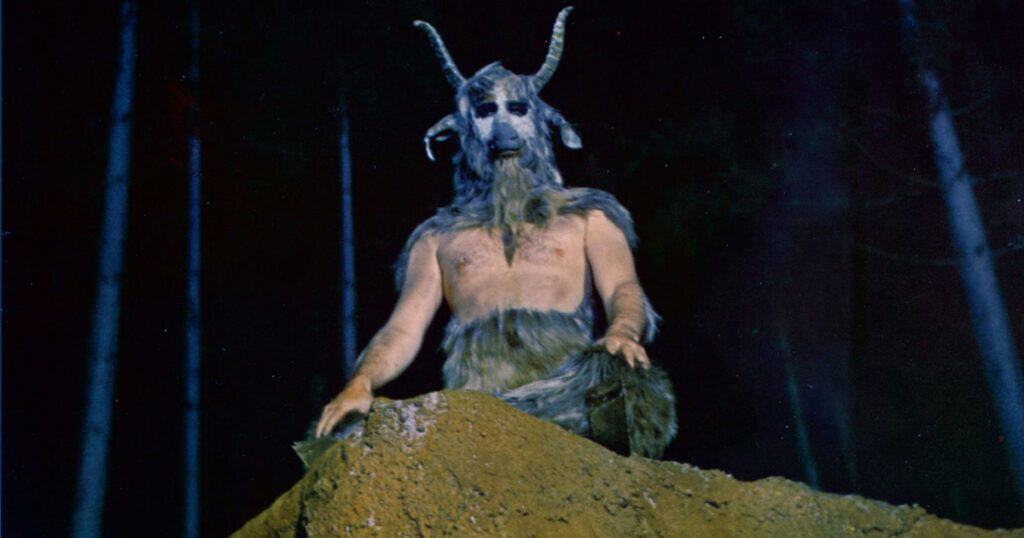
THE DEVIL RIDES OUT (1968)
A Hammer film that was written by author Richard Matheson but based on the work of a different another (a novel by Dennis Wheatley, in this case), The Devil Rides Out is one of the many classics that were directed by Terence Fisher. Christopher Lee is the hero this time around, bringing to life Nicholas, Duc de Richleau, a character Wheatley wrote about many times. The Duc is out to bring down a devil-worshipping cult headed up by Lee’s fellow Bond movie villain Charles Gray, an endeavor that takes a lot of effort. The film moves along at a quick pace and has plenty of creepy action, including possession, black magic attacks, a giant spider, the conjuring of the Angel of Death, and an appearance by Satan himself in the form of the Goat of Mendes. If only Hammer had made more Duc de Richleau movies with Lee as the character… They made a lot of franchises, but they also left plenty of promising opportunities on the table.
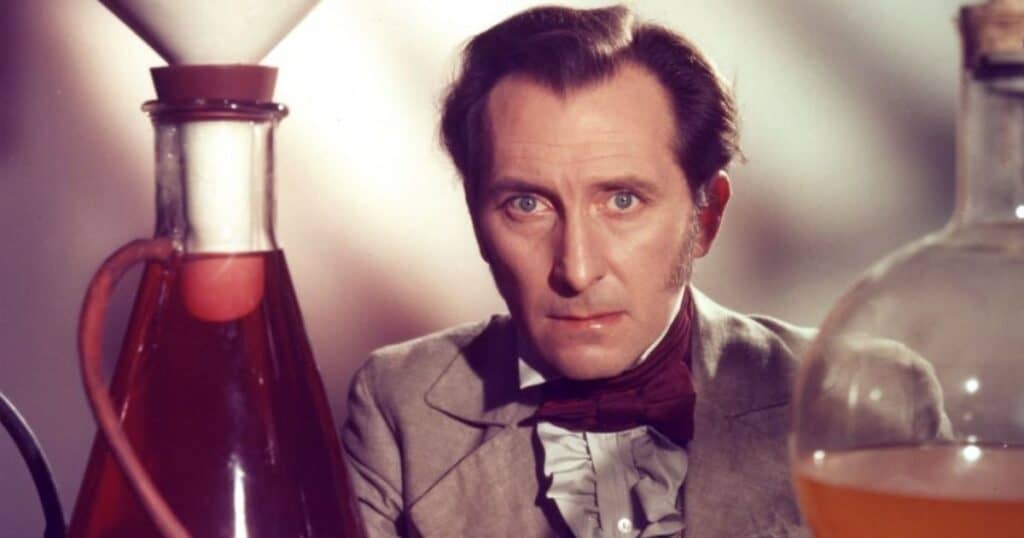
THE CURSE OF FRANKENSTEIN (1957)
One franchise opportunity they did not fail to pursue was the chance to make a series of Frankenstein movies – in fact, they made nearly as many Frankenstein movies as Universal did back in the day! It begins with The Curse of Frankenstein, a director Terence Fisher / writer Jimmy Sangster collaboration that tells a variation on the classic Mary Shelley story, this time with Peter Cushing as Baron Victor Frankenstein and Christopher Lee as his monstrous creation. It’s a great take on the very familiar tale and opened the door to multiple sequels, with Cushing returning for monster-making, brain-swapping, and soul-transferring adventures in The Revenge of Frankenstein, The Evil of Frankenstein, Frankenstein Created Woman, Frankenstein Must Be Destroyed, and Frankenstein and the Monster from Hell. In the midst of this, Hammer also produced a tongue-in-cheek remake of The Curse of Frankenstein called The Horror of Frankenstein, which starred Ralph Bates as Victor Frankenstein. But the people wanted more Cushing, so Hammer gave them more Cushing.
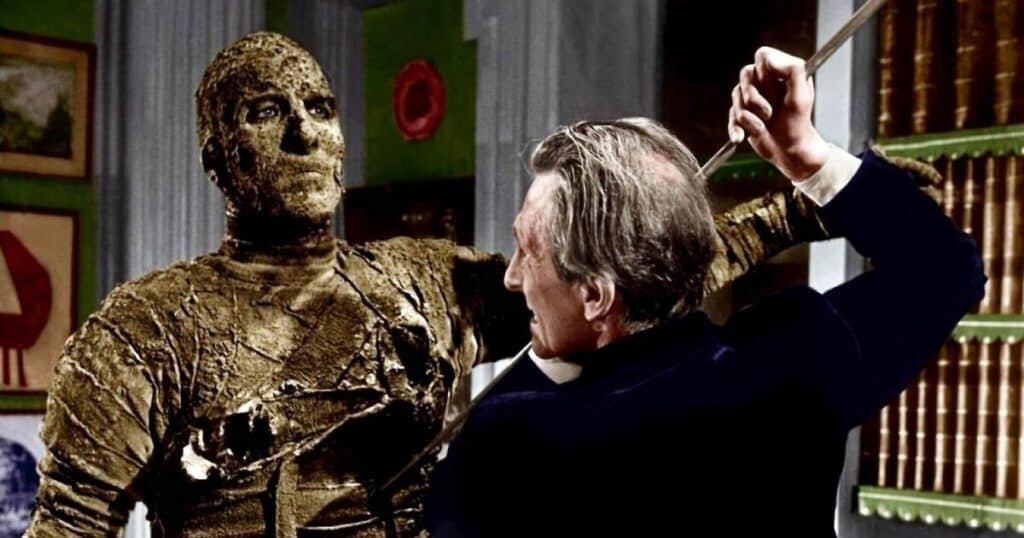
THE MUMMY (1959)
Hammer dealt with some of the same characters as Universal’s classic monster movies, but their Dracula and Frankenstein films have nothing to do with the ones Universal made about those characters. The Mummy is a different situation. For this one, they secured the remake rights from Universal and proceeded to cherry-pick elements from the studio’s entire Mummy franchise, mixing together ideas, characters, and scenes from all of the movies (except Abbott and Costello Meet the Mummy). Directed by Terence Fisher and written by Jimmy Sangster, The Mummy 1959 has Peter Cushing and Christopher Lee facing off again, this time with Lee as the silent, bandage-wrapped, mud-caked title character and Cushing as archaeologist John Banning… whose wife has a strong resemblance to the great love the mummy lost in ancient Egypt. Blending bits and pieces of all the Universal Mummy stories worked well, resulting in an excellent film. This also sparked a franchise and was followed by The Curse of the Mummy’s Tomb, The Mummy’s Shroud, and Blood from the Mummy’s Tomb, all of which are stand-alone mummy stories.
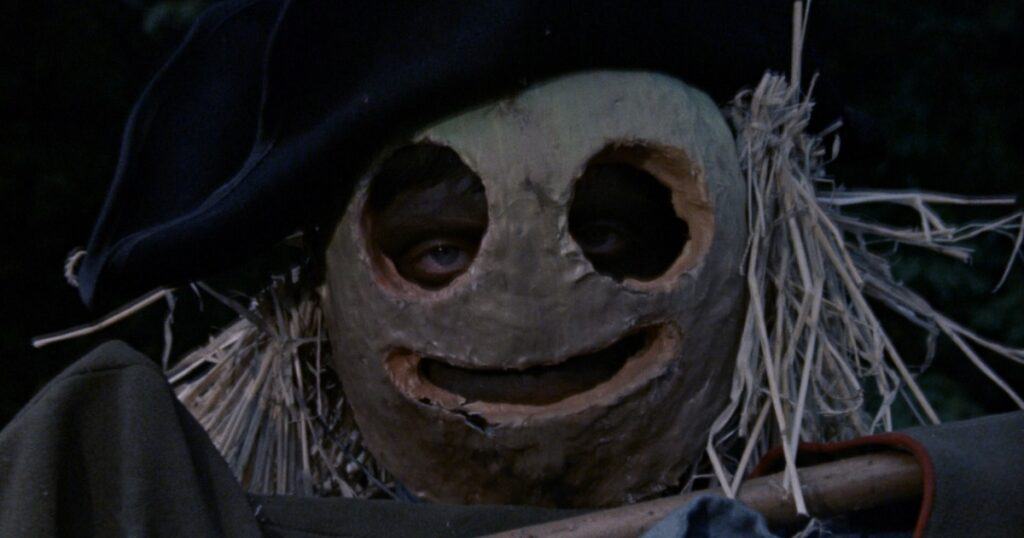
NIGHT CREATURES (1962)
Night Creatures, a.k.a. Captain Clegg, is an odd one, because this a movie I would never think to call a horror movie if not for the fact that it’s traditionally considered a horror movie. For the most part, it’s a sort of adventure film / drama, with Royal Navy soldiers coming to the small village of Dymchurch to investigate reports of an alcohol smuggling operation. Peter Cushing stars as local parson Dr. Blyss, who may have some connection to the legendary pirate captain Nathaniel Clegg, a man who was supposedly hanged for his crimes. The locals are indeed smuggling alcohol, and we watch how they try to avoid getting caught. Horror elements only enter the picture in a couple of scenes that involve the Marsh Phantoms; men on horseback, wearing glow-in-the-dark skeleton costumes. I don’t really think those moments are enough to make this a horror flick, but it’s a good movie nonetheless.
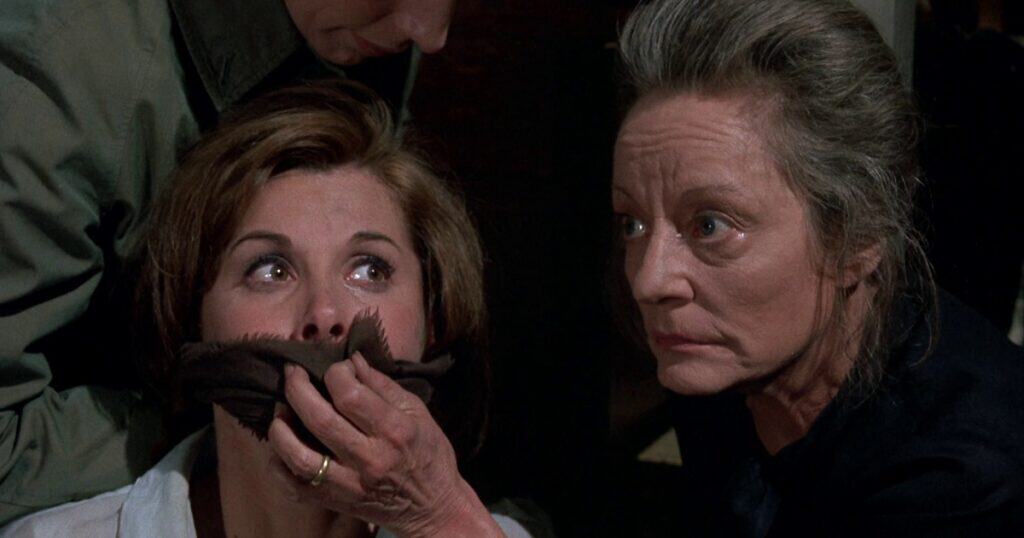
DIE! DIE! MY DARLING! (1965)
This one is also known as Fanatic, but Die! Die! My Darling! is a much better and more attention-grabbing title. Directed by Silvio Narizzano from a screenplay written by legendary author Richard Matheson and based on the novel Nightmare by Anne Blaisdell, the film manages to be a captivating, engaging thriller despite the fact that the lead character is one of the most pathetic, ineffectual heroines you would ever hope not to see; the stereotypical damsel in distress. Played by Stefanie Powers, that character is Patricia Carroll, an American woman who decides to meet with the mother of her late British fiancé during a trip to England – and finds that her almost-mother-in-law, played by Tallulah Bankhead in her final screen role, is a religious fanatic with some extreme beliefs. So extreme that she locks Patricia in the attic of her home so she can try to save the girl’s soul. Die! Die! My Darling is one of several great psycho-thrillers that were made by Hammer. Other standouts include Fear in the Night, The Nanny, The Snorkel, and Nightmare (which had nothing to do with Anne Blaisdell’s novel).

THE PHANTOM OF THE OPERA (1962)
Following in the footsteps of Universal again, Hammer sent their own take on the Gaston Leroux novel The Phantom of the Opera out into the world in 1962 – and this is a fun version of the story, if you can tolerate the amount of opera singing that director Terence Fisher included in its 84 minute running time. Herbert Lom plays the Phantom that lurks around the opera house, abducting chorus girl Christine (Heather Sears) and taking her down into his sewer lair with the help of his dwarf assistant (Ian Wilson). Edward de Souza is Christine’s love interest Harry – and there’s some confusion as to whether the role of the Phantom or Harry was originally intended for Cary Grant, who had expressed interest in working on a Hammer horror movie. Grant didn’t end up playing either character… but the movie would have been even better if he had. As it is, it’s still a good time.
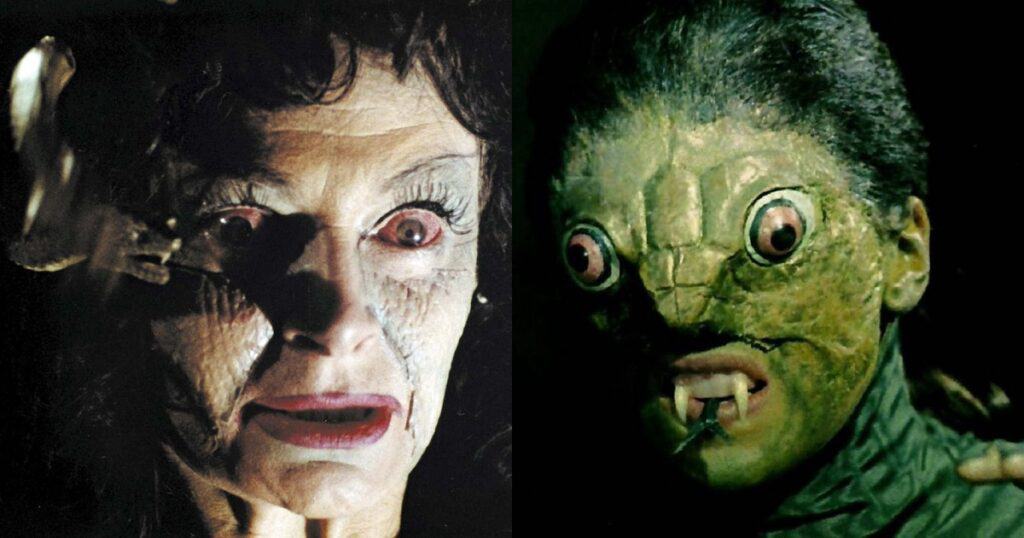
THE GORGON (1964) / THE REPTILE (1966)
Here we have a two-for-one special, as director Terence Fisher’s The Gorgon and director John Gilling’s The Reptile are two similar movies that are both well worth checking out. The Gorgon is set in a village that has been the site of several strange murders in recent years, with victims having been turned to stone. This all links back to ancient mythology, the stories of Medusa and her sisters, and it’s up to Peter Cushing and Christopher Lee to put a stop to all of this. In The Reptile, residents of a village are falling victim to a mysterious ailment referred to as the Black Death… and it turns out that one of the local people transforms into a reptile creature with a fatal bite. These are fun monster movies that can be paired for an entertaining double feature.
What do you think of this list of The Best Hammer Horror Movies? How would you rank the films, and where would you place some of their other classics, like The Curse of the Werewolf, The Plague of the Zombies, or Dr. Jekyll and Sister Hyde? Let us know by leaving a comment below.
The post The Best Hammer Horror Movies appeared first on JoBlo.
Leave a Reply